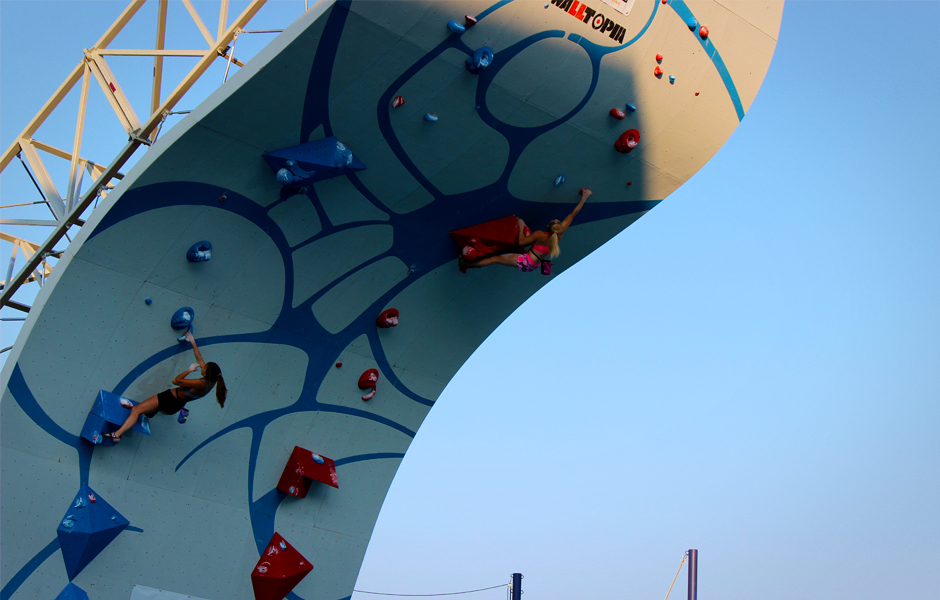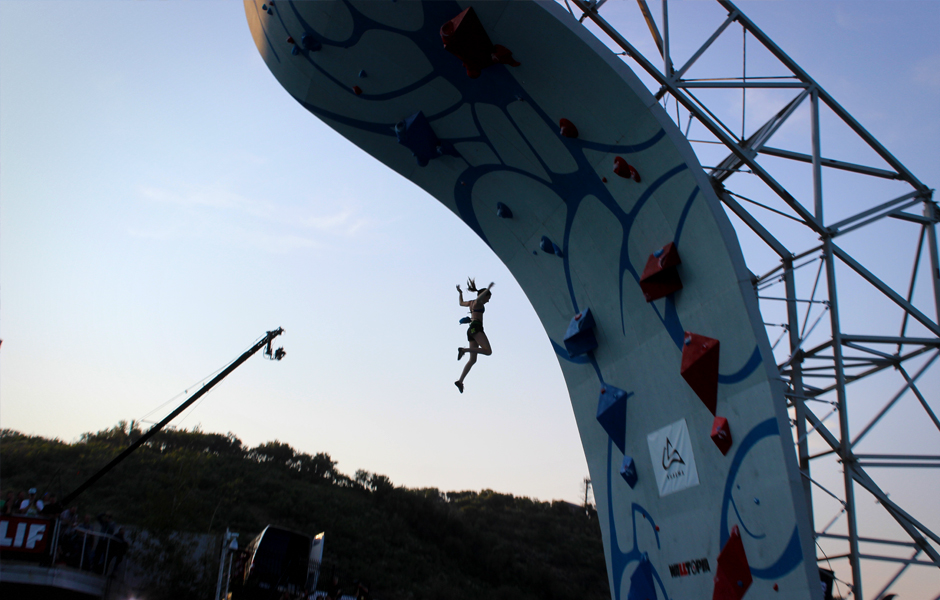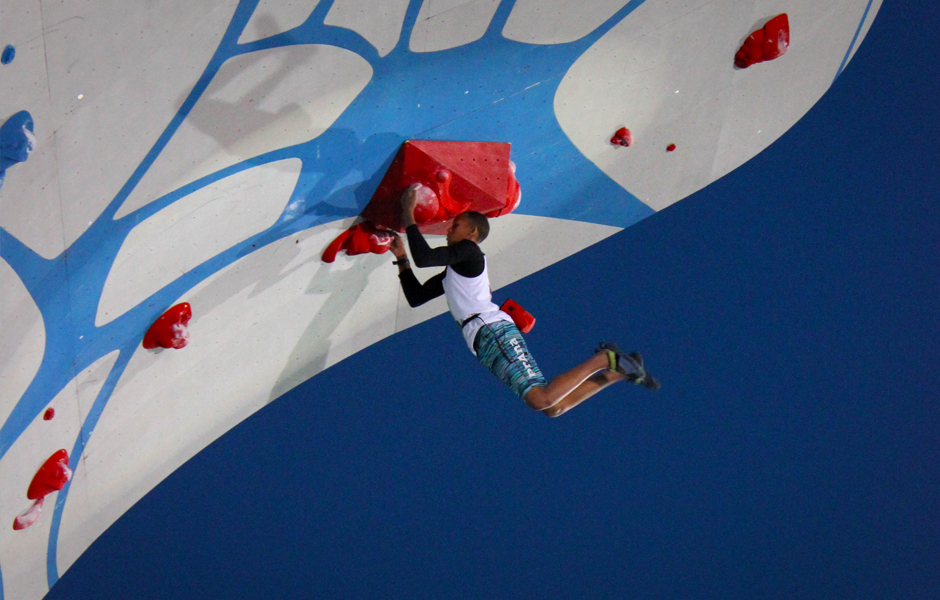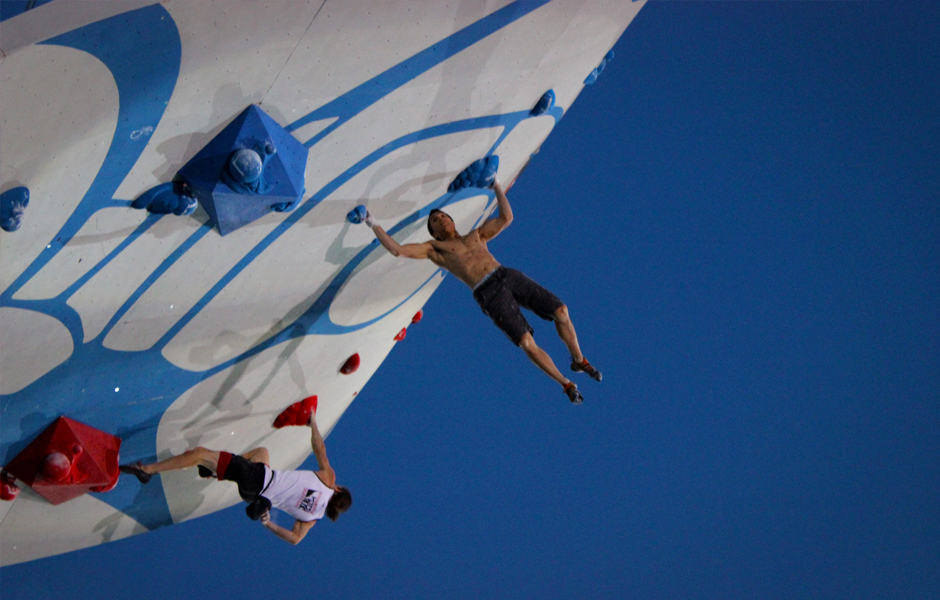- 1. Psicobloc
- 2. Psicobloc
- 3. Psicobloc
- 4. Psicobloc
- 5. Psicobloc
In the climbing world, names like Chris Sharma and Sasha Digulian inspire visions of super human efforts on inconceivable rock routes. For the rest of us, the idea of massive expeditions to otherworldy places, and competitions to speed-climb through nearly featureless rock is sometimes lost in translation. However, some pioneering efforts by Sharma and an elite cadre of climbers from all over the world have brought a new style of climbing, deep water free-soloing, to the mainstream, and this spectator friendly style of competition is rapidly making an impact with hardcore climbers and the general public alike.
Deep water free soloing has its roots in the climbing community in and around Majorca, Spain in the 1960s and 1970s, where it is called psicobloc: literally “crazy boulder”. Climbers ascended seaside boulders and cliffs without protective gear or ropes, often ending an ascent with a screaming plunge into the water. As word got out among climbing’s elite, pilgrimages to Majorca, the Dorset Cliffs in England, and Halong Bay, Vietnam became common place. Still, these largely unattainable exotic locales made for excellent expedition climbing and professional photo shoots, but moving the sport into the limelight has been a slow process.
Enter Sharma’s vision of the Psicobloc Master’s Series.In it’s second year, the competition has found a unique format of head to head knock outs by bringing some of the original deep water pioneers together with rising stars on a massive fifty-five foot wall above the training pool at the Utah Olympic Park. We were lucky enough to spend the evening of finals on the pool deck watching athletes take on the unenviable task of scaling – and often taking the plunging fall off – the incredibly hard routes up the wall. After four rounds up the wall, Sean McColl and Claire Buhrfeind were ultimately named champions.
Keep an eye out for competitions like this to grow. Since last year’s inaugural championship, deep water contests and tours have sprouted up all over the world as new generations of young climbers are introduced to psicobloc. The Master’s Series will continue to be the pinnacle of the sport in the United States, drawing thousands to the venue, and many more to its live broadcast this year. Whether you’re crazy enough to strap on a pair of rock shoes and hit the water, or content to watch from the safety of your computer screen, psicobloc is here to stay.







